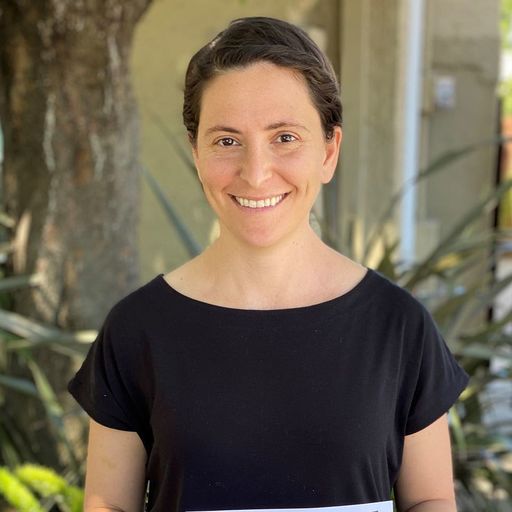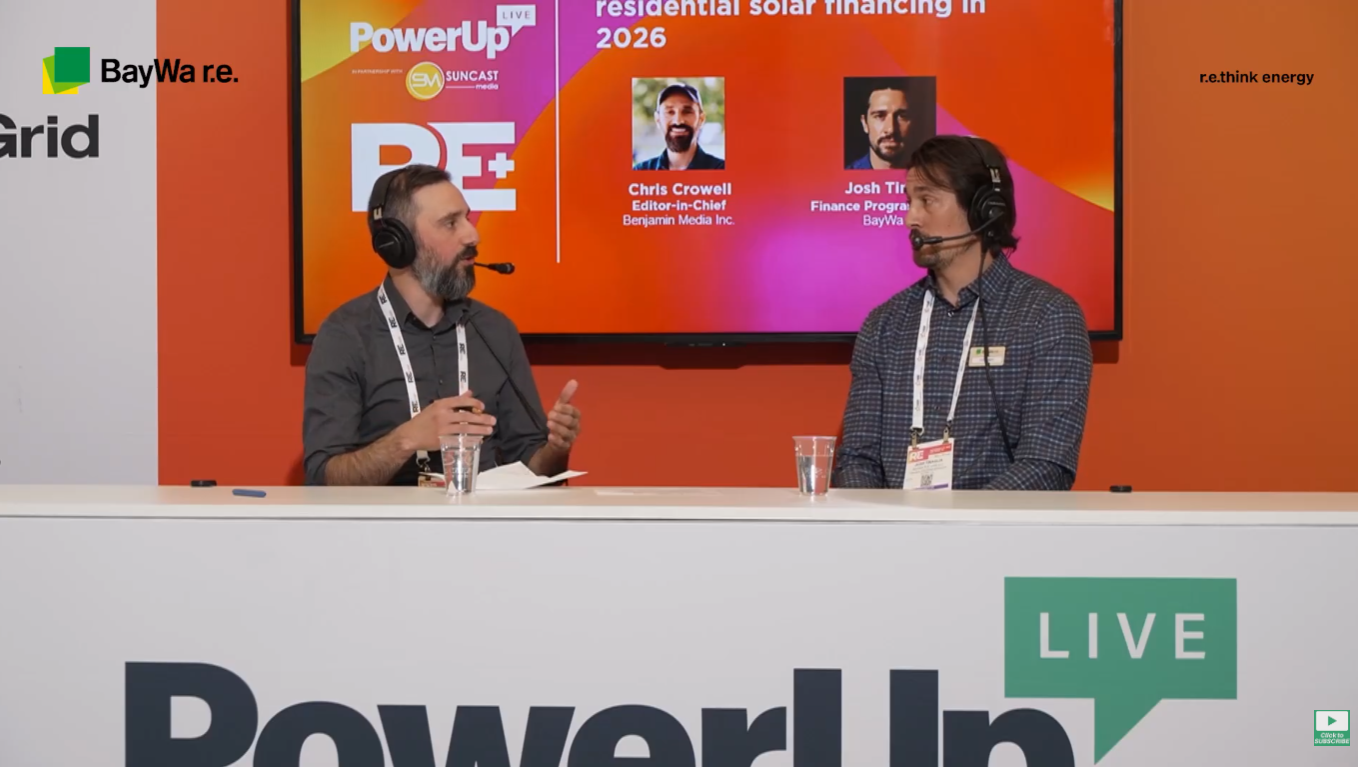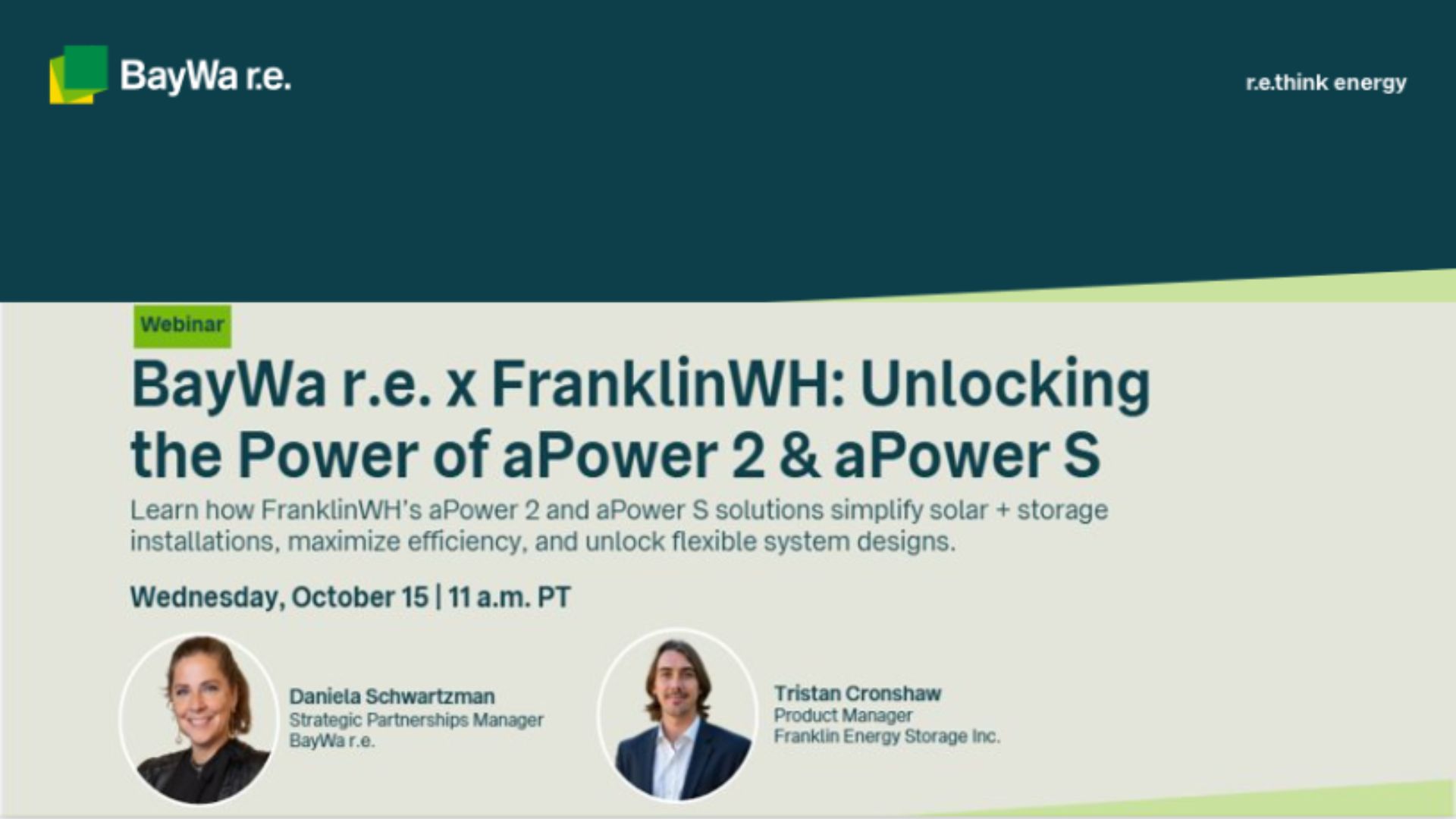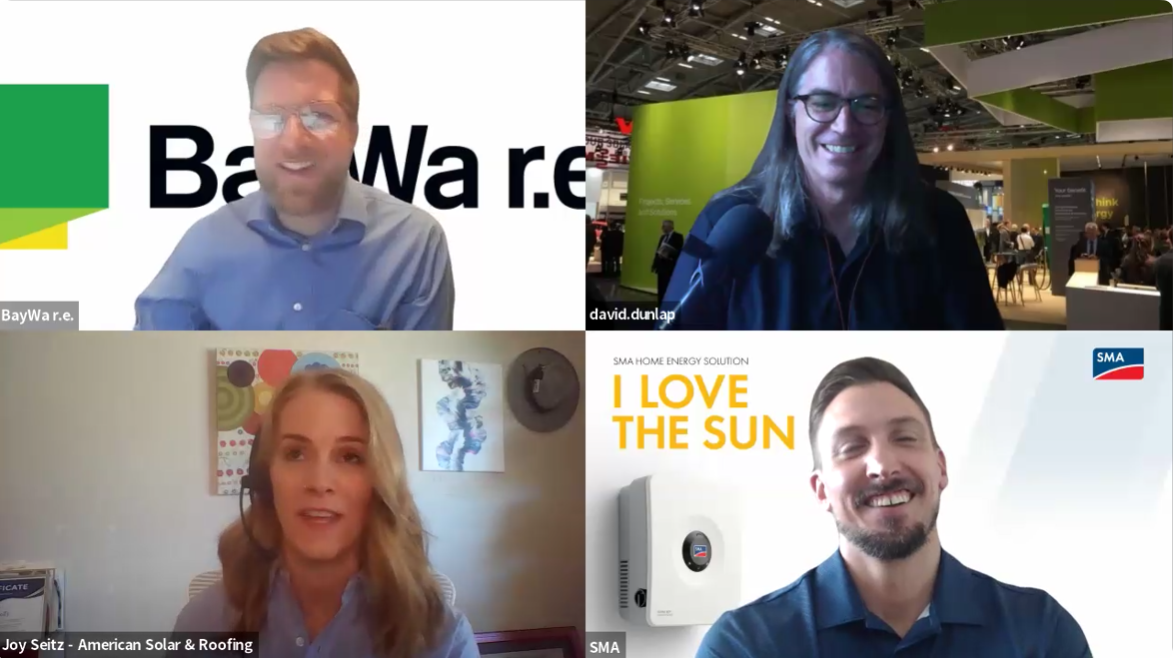- How rising low-interest loans affect solar sales
- Common financing mistakes and how to avoid them
- How to manage redlining and price increases
- What solar installers across the country are thinking about
The podcast is hosted by our own financing guru, Rachel Schapira — who is always available to discuss how BayWa r.e. can support your business goals with our Split Pay financing program.
She is joined by Gregg Fisher, Senior Director of Business Development at GoodLeap (formerly LoanPal), and Robyn Kenkel, Principal Consultant at HHFR Enterprises
- Gregg Fisher, Senior Director of Business Development at GoodLeap (formerly LoanPal)
- Robyn Kenkel, Senior Director and Head of Counterparty Risk at Mosaic
- And our own financing guru, Rachel Schapira — who is always available to discuss how BayWa r.e. can support your business goals with our Split Pay financing program.
Thanks for following and enjoy the podcast!
PODCAST HIGHLIGHTS:
Low-Interest Loans – What will happen if interest rates rise? (3:07): “The misconception is that rising interest rates and loans… slows the growth of the industry. That has not been the experience… in the last 5-6 years when loans have become the preferred or dominant method of acquiring a solar system. So, if you look back to 2018, most of the… low APR loan products in the marketplace were… 20-year, 3.99%. The industry grew 35-36% that year. So, if you look at how we view commodity adjustments in pricing… the industry adapts and… that is still a relatively low cost to the homeowner… and in most markets in the US there will still be a value proposition that gives them an… opportunity to save money, at least have a lower obligation to their loan payment than they do to their utility company on Day 1.” – Gregg Fisher, GoodLeap
Common mistakes made when working with residential financing (12:25): “I’m still seeing misleading marketing… so I think it’s time to clean that up. Installing solar on sites that are not optimal for solar, so with a lot of shading, north facing planes, really terrible roof tilt systems… Sub-contracting without proper QA/QC… This can be very costly, and it can cost you your relationship with you finance company. I am also seeing that dealer fees are not being calculated correctly… The correct calculation is (Cash Price / 1 – Dealer Fee) NOT (Cash Price X Dealer Fee) and so that change in the margin can affect the overall profitability of a project. I don’t think that we are forecasting very well, especially to our distributors, so… we are seeing a lot of supply constraints and there is a lot of high turnover, so training is the key to retention. Making sure that your sales reps actually understand how to sell financing and be able to calculate all those different variables for the customers. Rolling non-ITC items into the loans. There are specific loan products that that allow for this type of thing so just make sure that if that is the case you are using the correct product… We’re not as an industry really trying to push down the sales cost and some of the fluff that gets added into the overall loan, and so I think long term that hurts us as an industry. Always leading with the lowest APR because that may not be in the best interest of the customer. Yes, it’s always probably easier to sell, but it’s not necessarily in the best interest of the customer.” – Robyn Kenkel, HHFR Enterprises
“I personally spend a lot of time with small and mid-size installers… and the conversation we always have is… ‘Let’s stop thinking 6 days down the road. Let’s start thinking 6 months down the road… What does the next year look like?’ And the reason for that is that… it’s anomalous to the when we talk about the US economy, and everyone says that… local businesses are the heartbeat of the US economy and build the foundation… And I believe that long term the small and midsize regional installers will serve that same role in our industry. So, when Robyn talks about ‘Are we just chasing the lowest APRs? Are we just chasing the lowest program fees?’… one thing to keep in mind is when you work with a finance provider as the contractor of record, the liability really is with you, the contractor. Was the system sold compliantly? Is the contract fair and reasonable? Did you live up to the terms and conditions of your contract? Did you get the system operational? All those things. And, if you are working with a finance platform and you willfully neglect to meet your obligations or you are not able to, you… could have the liability of that loan on your company. And so, the idea is that we are making sure we are thinking about long term and how do we do things the right way? It’s not just about today but what is happening tomorrow. Are we working with sales organizations that are acting honorably and morally and ethically?” – Gregg Fisher, GoodLeap
Adjusting Redlining and Pricing with Inflation (16:54): “A lot of small to midsize installers now are really having a really tough time because as the module price increases have taken effect the commodity price increases… contractors are absorbing that cost because they are deathly afraid to have to go back to their sales partners and renegotiate or adjust the price so that these costs get passed through. And so, my concern is that that is a short-term solution and probably doesn’t have a happy ending for a lot for these contractors… and I don’t know any other product right now where the cost hasn’t gone up considerably… [It is getting] passed along to the consumer. But this is where you have to have a conversation with the sales organization and say, ‘we are all feeling the pain with this’ and ultimately, though, it’s the consumers responsibility to absorb it if this is a good and service, they elect to engage with right now.” – Gregg Fisher, GoodLeap
“A lot of contractors think that the price squeezes that are happening now, both in labor costs and material costs, are extremely short term and are going to go away fast enough that they can absorb the hit right now, but… these are not things that are going away overnight and will affect the installers’ cash flow and ability to stay in business and continue to serve their customers.” – Rachel Schapira, BayWa r.e. Solar Systems
Opportunities for Solar Contractors (19:20): “Opportunities out there for contractors to increase efficiencies… new services out there that can help them reduce costs, like rooftop delivery services, proposal software where you can outsource proposal writing, new technologies available on install day to help you install faster. I think what we are really lacking in the industry is transparency and so creating lasting relationships with your finance company and your distributors and really being transparent about where you are in terms of your sales and then, ‘what are the things they can do for you to make the experience better and to help you sell more and get more throughput in a quicker fashion?’ I think that there is an opportunity to help increase the perception of our industry by calling out the bad actors… because ultimately we’ve got to move on and have the faith of the consumer that they’re actually going to get what they’re contracted for.” – Robyn Kenkel, HHFR Enterprises
“The compartmentalization of the process ongoing is actually a good thing… and what I mean by that is that having an integrated proposal tool, leveraging distributors and supply chain logistic services who are truly subject matter experts. If you are just using a distributor as just somebody to buy product from, if you are just using a finance platform as a loan vendor, there is a lot to be missed. There is a lot of knowledge. There is a lot of assistance and there is a lot of opportunity. We seem to be shy about talking about margin and profitability for solar contractors. We want them to be healthy. We want them to have a strong margin. There is a lot of resources in this space… people on this call and the companies they work with can make available, but with any type of evolution of an industry… a lot of consolidation at all levels. It’s happening up and down and I think ultimately, it’s going to be a good thing for the industry, and I also think it’s going to create a lot of opportunity for contractors to leverage the value that these new combined entities… can bring to the table.” – Gregg Fisher, GoodLeap
“I think that focusing on the customer post-install… Right now, we are like, ‘We installed it. We got PTO. We are done.’ But that is not actually the case. This is a system that is exposed to weather, and critters, and all kinds of other events… Starting to think about how you service those customers post install is really important… we need to do better at that as an industry.” – Robyn Kenkel, HHFR Enterprises
Redlining: What installers can do to protect themselves against rising costs (30:16): “Most of the contractors I have talked to in Florida, Texas, Nevada, California, and Arizona, in some of the traditionally the stronger markets have all told me the same thing, ‘I am waiting for the big contractors to move their pricing and then I will move mine.’ And the expectation is that if they move it, sales organizations will say, ‘What is happening here?’ And they will be more accepting if it is happening elsewhere. The challenge with that is some of the larger installers might be able to adsorb it longer, some of the other larger installers might be in long term procurement agreements directly with manufacturers and distributors that they were able to go back and renegotiate… Smaller folks are buying… through distribution and so their negotiating and leverage is not quite as strong. So, what we hope is that we are able to encourage contractors and sales organizations to have real conversations about what is happening. What they think the long-term outlook is. How can they come to an arrangement where the sales organization feels like it’s being treated fairly? The contractor feels like they aren’t having to absorb the labor and material increases and then you have a fair market price for the goods and service you are offering. Those conversations, at least at this point, have seemed a little slow to take hold.” – Gregg Fisher, GoodLeap
“It’s almost impossible to change a redline without the threat of losing your sales team… We have to do this across the industry for it to really to make an impact. Everyone has to ban together and say, ‘we need to do something.’ It’s typically contractually defined and unless you are super thoughtful about that in the beginning where you have provisions to where you can go back and make price adjustments… then unfortunately you are out of luck. In my experience those with low redlines have higher changes of operational issues because they are operating on such a razor thin margin that it just doesn’t work in the longer term. So, you are filling up your pipeline… and then you have to make sure you install all of that, but one bad final inspection… can turn you into the red… so if your operations are not dialed in in every market, it can cost you dearly… You really, as a contractor, need to understand what your true costs stack is and also your overhead and the installation costs.” – Robyn Kenkel, HHFR Enterprises
“That is a critical point to underline: Recognizing that we are in for more volatility and that you have the bandwidth to weather what is coming… Leverage your finance partners and your distribution partners who want to help you through this. We have a lot of subject matter expertise, and we have a lot of skin in the game… we want to help you through it.” – Rachel Schapira, BayWa r.e.
What is on installers’ minds? (42:48): “I think it’s market dependent right now. I think you have markets like Arizona and Texas that continue to be really robust so there is a lot of optimism there. It feels like where there is a problem, there is a solution… There has been more interest in batteries and storage… In California and Florida there is a lot of uncertainty. There is a lot of business owners that are really hesitant to make further investments into their business until there is some clarity on what is going to happen with some of the legislative policies… A lot of optimism in markets where we don’t typically think about with solar: Oklahoma, Missouri, Arkansas. These are growing markets with some really strong players doing a really good job. So, it really is a mixed bag right now. I think in total there is still a lot of optimism, but I would say it’s cautious optimism… It feels like most people think that the market will continue to win, that the industry will continue to grow, and that ultimately… electricity savings are still really high on people’s minds. And if it makes financial sense on Day 1… the market will continue to grow.” – Gregg Fisher, GoodLeap
“Most of these folks are starting to think about ‘How we bring roofing in house, so we don’t have to subcontract that out… because all the good roofs have been cherry picked.’ What’s going to happen with the ITC? The long tail is really trying to figure out how they incorporate storage into their product offerings, but at the same time they can’t really get the batteries and so it’s like, ‘I know that I need to offer this but I don’t know how I can get it… so how does that work with my overall operational process’. And then how to plan for O&M and warranty work. Many installers are so busy installing new systems so that kind of goes by the wayside. If you are a solar contractor, you should be… determining how you put a reserve in place to make sure you have enough capital to service your customers.” -Robyn Kenkel, HHFR Enterprises

Rachel Schapira is Director of Residential Financing with BayWa r.e. Solar Systems. She has worked in energy and technology management for more than 15 years, joining us in March 2020 from Mosaic.
BayWa r.e. Solar Distribution supplies residential and commercial solar installers in the United States with quality solar + storage components, forecasting, business planning advice, and a community of experts. Visit www.solar-distribution.com to engage with our team, read our industry insights articles, and stream our Solar Tech Talk podcasts and recorded webinars on YouTube and Spotify. Follow us on LinkedIn and Facebook to stay connected. Ask us about our Financing Program and use our industry-leading Webstore to save time, get gear shipped, and get jobs done!
Part of the BayWa r.e. Global family of renewable energy companies.




